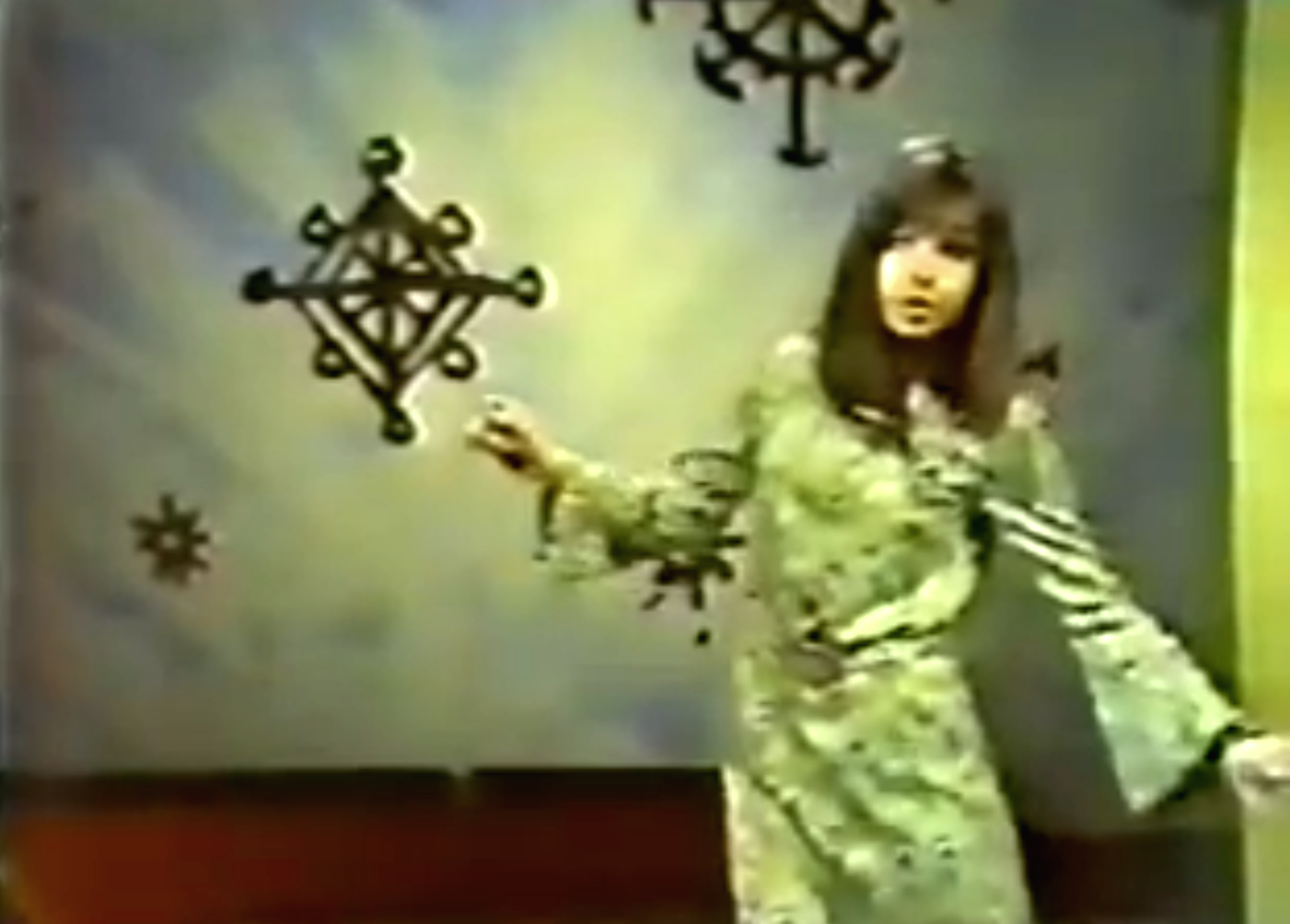【Apps Archives】
On Being Blue
Our Daily Correspondent

Vicky Leandros performing “L’amour est bleu.”
Of the colors, blue and green have the greatest emotional range. Sad reds and melancholy yellows are difficult to turn up. Among the ancient elements, blue occurs everywhere: in ice and water, in the flame as purely as in the flower, overhead and inside caves, covering fruit and oozing out of clay. Although green enlivens the earth and mixes in the ocean, and we find it, copperish, in fire; green air, green skies, are rare. Gray and brown are widely distributed, but there are no joyful swatches of either, or any of exuberant black, sullen pink, or acquiescent orange. Blue is therefore most suitable as the color of interior life. Whether slick light sharp high bright thin quick sour new and cool or low deep sweet dark soft slow smooth heavy old and warm: blue moves easily among them all, and all profoundly qualify our states of feeling. ―William Gass, On Being Blue: A Philosophical Inquiry
Sixty years ago, the camp spectacle we know as the Eurovision Song Contest was born. And in 1967, said Eurovision contest was the site of one of the most shocking miscarriages of justice in international pop-music history.
The competition is famously political—some would say corrupt—and the winning songs have often raised a cynical eyebrow. So maybe no one was surprised when Luxembourg’s ’67 entry—“L’amour est bleu,” performed by the Greek singer Vicky Leandros—didn’t win. No onecould have taken out the UK juggernaut “Puppet on a String.” But Luxembourg came in fourth! Behind the Irish entry, “If I Could Choose,” and France’s “Il doit faire beau là-bas”! It was arguably the biggest outrage since 1958, when “Volare” lost out to the insipid “Dors, mon amour.”
“L’amour est bleu” was covered by everyone from Claudine Longet to Marty Robbins, and the instrumental version is now an easy-listening classic. Although the English lyrics, in particular, are asinine, it’s a song that really stands up to this treatment: every single rendition is super. I am privately convinced that it informed Gass’s On Being Blue, though scholars have, thus far, willfully ignored this hypothesis.
Sadie Stein is contributing editor of The Paris Review, and the Daily’s correspondent.






Related Articles